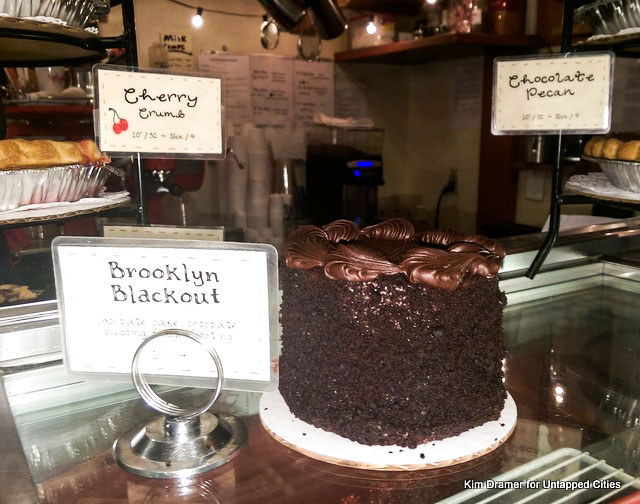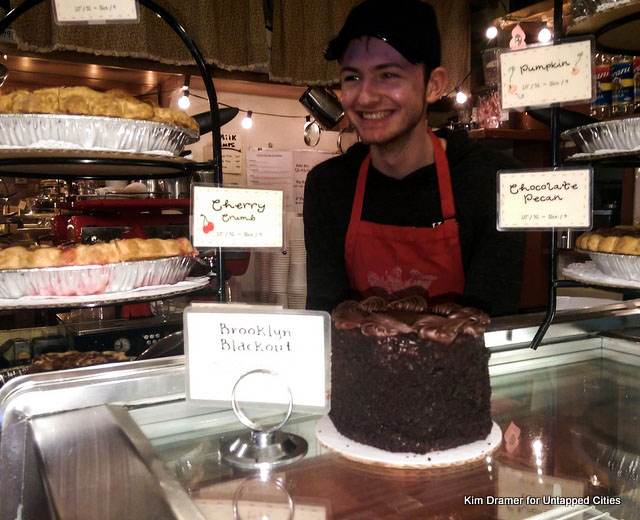
From quintessential black and white cookies to New York-style cheesecake, New York City has been the birthplace of many popular desserts, still enjoyed by tourists and locals alike. Yet, the blackout cake, a chocolate layer cake often filled with chocolate pudding and adorned with chocolate cake crumbs, has its origins in Brooklyn over 100 years ago. Blackout cakes are well-known for their delicious richness as well as their 24-hour shelf life.
According to Louise McCready in an Edible Brooklyn article, the cake first appeared as “chocolate fudge cake,” yet the cake inherited its current name to honor the frequent blackout drills during World War II to protect the Brooklyn Navy Yard, the workplace of 42,000 workers in 1942. The Civilian Defense Corps would direct all city lights to be shut and windows to be covered when the Navy sent its ships to sea so that enemy planes could not spot them. Blackout drills in New York City began in 1942 and persisted throughout the war, dimming normally bright sights like Coney Island and Times Square’s theaters and billboards. Many buildings tarred over their skylights as well, including those at Penn Station, the Ansonia Hotel, and even the skylights above the old City Hall subway station were blackened.
The extremely popular cake was invented by Ebinger’s, a German Brooklyn-based bakery chain, which opened in 1898 on Flatbush Avenue and quickly grew to over 50 locations. As neighbors of the Brooklyn Navy Yard, Ebinger’s began marketing the cake as a “blackout cake.” The bakery closed for good in 1972, yet it is unknown exactly when the bakery started selling the blackout cake. According to writer Leah Koenig in Politico, the cake likely filled the bakery’s shelves in 1906 after its founder George Ebinger retired and gave the business to his sons.

“For mid-century Brooklynites, it was also the stuff of Pavlovian craving. Ebinger’s blackout cake was a staple hostess gift, birthday cake, and holiday table treat,” writes Koenig, “Kids attacked slices of the wobbly chocolate cake, ending up with chocolate crumb mustaches. Adults found their heartbeats quickening whenever they saw the telltale pale green box tied with string. When people moved away from Brooklyn, they enlisted visiting family members to smuggle them a cake (or two) in their carry-on bags.”
The bakery served over 200 German-style pastries in addition to the blackout cake, including old-fashioned layer cake, lemon cake, crumb cake, and Othellos, spongecake filled with dark chocolate. Many of these cakes were sold for just a quarter on Saturday nights. The bakery followed the trend of the late 1800s as German immigrants escaping pogroms opened German-style bakeries in cities like New York. The bakery was also famous for its sparkling white shelves and its pale green and brown crosshatched boxes. Yet the blackout cake remains a signature dish of Brooklyn still enjoyed by many New Yorkers.
“For those who grew up in Brooklyn, when Brooklyn was the world, there is no sweeter sound than the Ebinger’s brand name. No other word can pull such heartstrings, signal such salivation,” wrote food writer Molly O’Neill in a 1991 New York Times article.
When the bakery closed, however, the recipe for this New York staple disappeared. People frantically tried to recreate this Brooklyn specialty such as Brooklyn baker Lou Guerra and John Edwards, the latter of whom manufactured commercial versions of Ebinger’s classic desserts. “But the proof was not in the pudding, and before long those too vanished,” McCready wrote.
Although the Ebinger family recipe still remains a secret, many bakeries across Manhattan and Brooklyn serve their interpretations of the blackout cake including Chocolate Room and Ladybird Bakery in Park Slope. While just a faded sign at the original Ebinger’s factory remains today, a rather active Facebook group continues to reminisce about the popular bakery which closed nearly 50 years ago.
Next, check out The Mysterious Origins of the Black and White Cookie!





